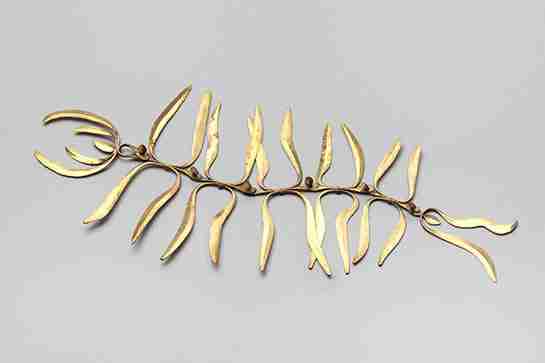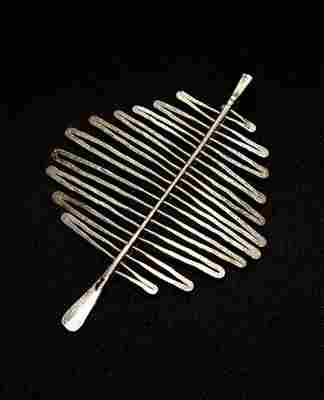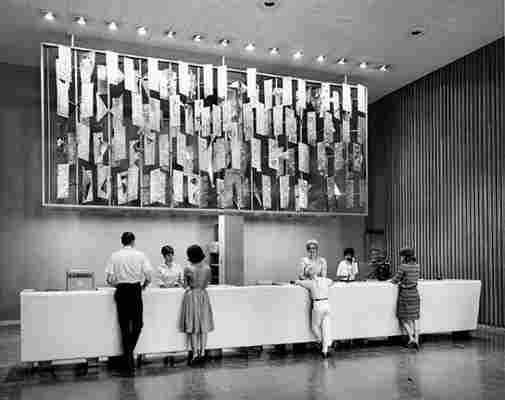Long before Harry Bertoia crafted the famous Diamond chair, he honed his metalworking skill on a much smaller scale by creating artful necklaces and pendants at Detroit’s Cranbrook Academy of Art. The U.S. had just entered World War II, and metal rationing eliminated the option of working in any larger sculptural format. Now “Bent, Cast & Forged,” an exhibition that opened Saturday at Detroit’s Cranbrook Art Museum, focuses on these oft-forgotten jewelry designs, showcasing 30 striking works from the 1930s through the ’60s.

From a centipede in hammered brass to a delicate spiderweb spun in silver thread, the jewelry on display shows Bertoia’s first foray into biomorphic abstraction. “He was looking at microbiology,” says curator Shelley Selim. “So a lot of the pieces resemble strange amoebalike microscopic organisms.” The style and techniques he developed in this medium followed him through the rest of his career.

This month, as the design world celebrates the creative great’s centennial, Bertoia’s daughter Celia has published The Life and Work of Harry Bertoia: The Man, the Artist, the Visionary (Schiffer, $60) in which she presents an enlightening portrait of her father. Celia shares his beloved pet projects, including his illustrations for Morris Guirl’s love story, How Long the Night. She shows famous forms that lack his signature (he claimed to have contributed integral features to the iconic Eames molded plywood chair). And she tells the mundane comedies of his daily life, such as the single time he grew a mustache or the two days he spent in jail for walking barefoot down Route 100. Through a collection of personal letters, intimate anecdotes, and archival imagery, Celia remembers her father’s legacy in a way that only a daughter ever could.

“Bent, Cast & Forged: The Jewelry of Harry Bertoia,” through November 29 at the Cranbrook Art Museum, 39221 Woodward Ave, Bloomfield Hills, Michigan; cranbrookardu/museum
